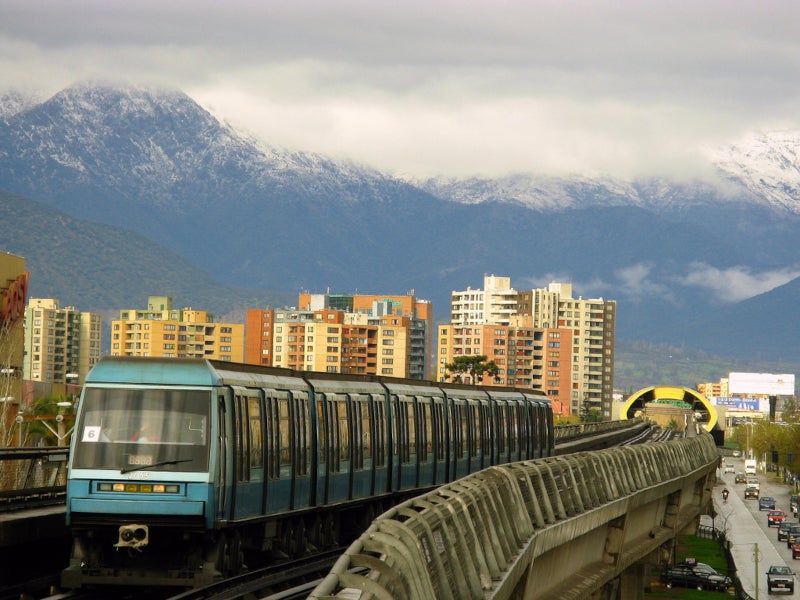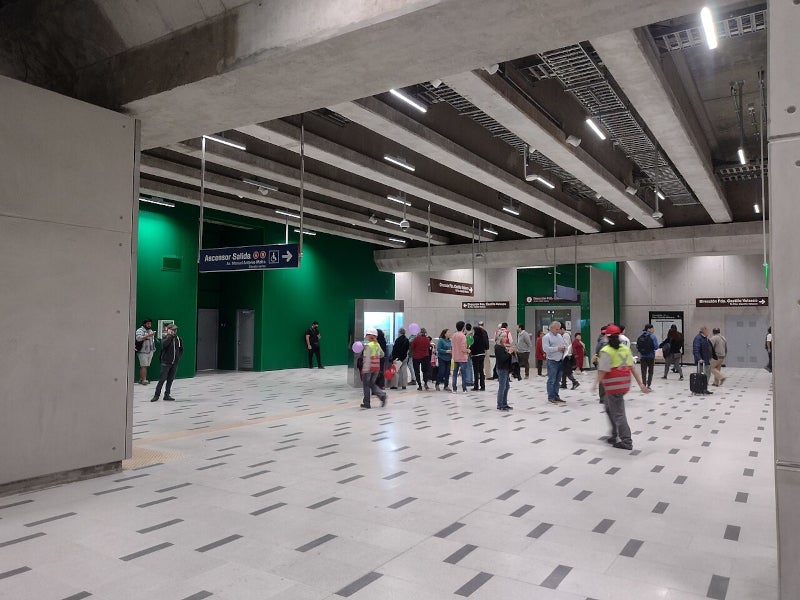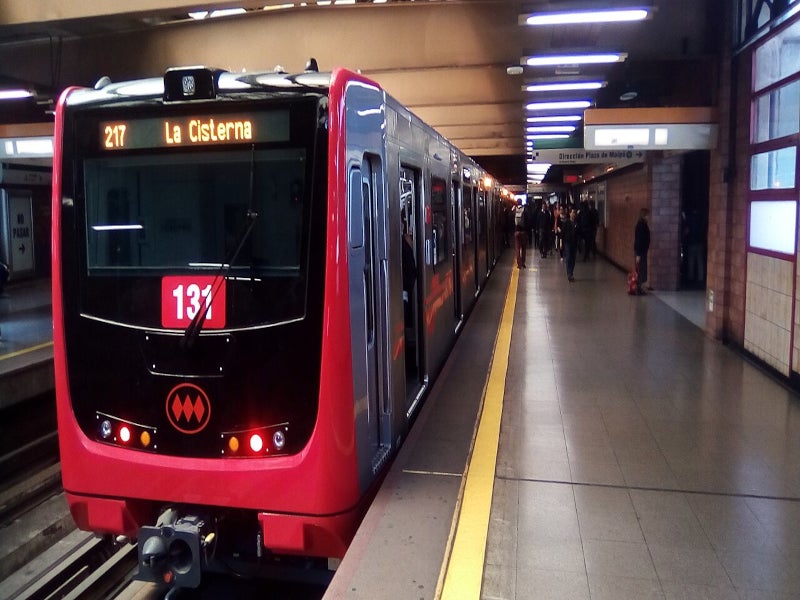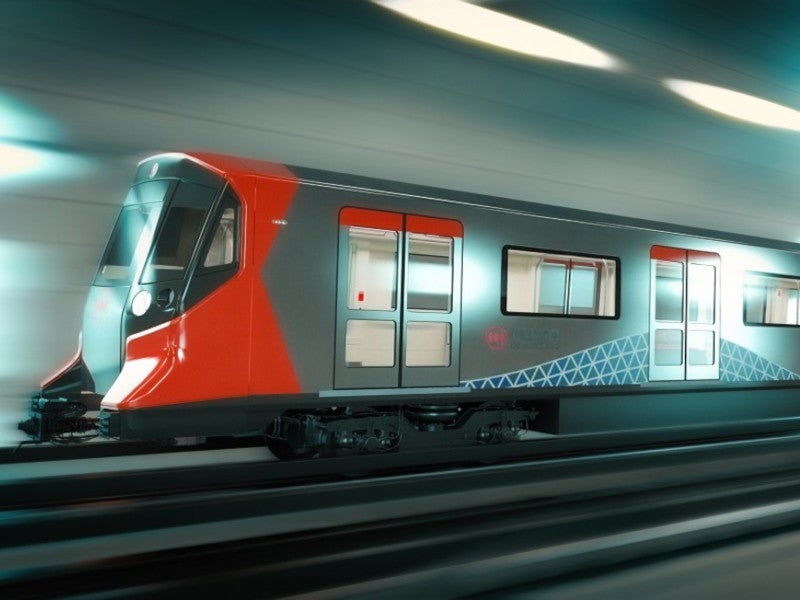The Santiago Metro, operated by the state-owned company Metro, is an extensive and growing metro network in Santiago, Chile. Encompassing seven subterranean lines stretching more than 140km and comprising 136 stations, it serves 25 communes within the metropolitan region.
A 1968 blueprint proposed five rubber-tyred metro lines, totalling 60km. Construction commenced in 1969, with the inaugural line launched in 1975 and Line 2’s initial segment debuting in 1978.
In 2022, the metro facilitated about 1.4 million daily journeys, culminating in an annual total of approximately 0.5 billion trips.
Santiago Metro project timeline
The Santiago Metro, comprising seven lines (1, 2, 3, 4, 4A, 5, and 6), has seen significant expansions since the opening of Line 5’s initial 10.3km segment in April 1997, which connected Vicuna Mackenna’s stop 14 to Plaza Italia’s Baquedano station.
In February 2000, a 2.8km extension to Line 2 introduced three new stations, extending from Baquedano to Bellas Artes and Plaza de Armas. The introduction of Lines 4 and 4A, covering more than 30km with 28 stations, provided a tangential route through south-east urban districts, with one station offering transfers to Line 1.
Line 5 expanded by three stations in March 2000, with Santa Ana station connecting to Line 2. On its first day, the network, then 40.4km with 52 stations, transported around a million passengers.
The west section of Line 5, including Cumming and Quinta Normal stations, opened in March 2004 while Line 2 saw the addition of four new stations in 2004 – Patronato and Cerro Blanco in the north, and El Parron and La Cisterna in the south.
November 2005 marked the opening of Cementerios and Einstein stations on Line 2’s north side and the first segment of Line 4, which included an underground stretch from Tobalaba to Grecia and a viaduct from Vicente Valdes to Plaza de Puente Alto.
Line 4 was completed in March 2006, with Line 4A following in August, linking Lines 2 and 4. The Vespucio Norte intermodal terminal and the first BiciMetros were launched in 2008, and in 2009, Metro Expreso service hours were extended on Lines 4 and 5.
The network continued to grow with the addition of San Jose de La Estrella station on Line 4 in November 2009, and the eastward extension in 2010 with Manquehue, Hernando de Magallanes, and Dominicos stations, as well as the first phase of Line 5’s Pudahuel extension. The 8.6km extension of Line 5, featuring seven new stations, began operation in February 2011.
Air-conditioned trains were introduced on Line 1 in 2012, coinciding with the commencement of construction for Lines 6 and 3. The network further expanded with the announcement of Line 2’s extension towards San Bernardo and Line 3’s extension to Quilicura in 2014, adding 8.9km to the network.
Line 6 opened in November 2017, offering a 15km route with ten stations between Cerrillos and Providencia. Line 3 began service in January 2019, covering 22km with 18 stations and connecting Quilicura to La Reina.
The Franklin intermodal opened in February 2020, followed by the Libertadores modal exchange station in Quilicura in November 2020. By the end of 2020, the train assembly project in Chile was 90% complete, with 25 out of 35 trains operational on Lines 2 and 5, and the first NS16 type train was introduced on Line 5.
In November 2023, the 5.2km extension of Line 2 began operations, serving an estimated daily ridership of 32,000 passengers.
The $409.2m project reduced travel time by 42%, cutting the journey from 41 to approximately 24 minutes and benefiting the communes of La Cisterna, El Bosque, and San Bernardo.
The Line 3 extension, costing $378.5m, added three stations – Plaza Quilicura, Lo Cruzat, and Ferrocarril – to the existing 18, serving an area with 271,000 residents.
This extension, which commenced in September 2023, reduced the journey from Plaza Quilicura to Universidad de Chile station to just 20 minutes, a 55% decrease in travel time.
New expansion projects
The 3km extension of Line 6, scheduled for completion in 2027 at a cost of $196.9m, includes one station and will serve the Cerrillos commune. The extension will reduce travel time by 87%, from 23 minutes to just three minutes, benefiting 90,000 local residents.
Line 7, a 26km line with 19 stations, will integrate Renca, Cerro Navia, and Vitacura into the Metro network for the first time, serving 1.6 million residents. To be operational by 2028, the project is estimated at $2.5bn and is expected to generate 25,000 jobs.
The 19km Line 8, featuring 14 stations, will traverse Providencia, Nunoa, Macul, La Florida, and Puente Alto. It will reduce travel time by 59%, from 57 minutes to approximately 23 minutes, and benefit more than 1.9 million people.
Line 9 will follow a 27km route along Santa Rosa Avenue, with 19 stops connecting eight communes- Recoleta, Santiago, San Miguel, San Joaquin, La Granja, San Ramon, La Pintana, and Puente Alto, serving more than two million residents.
Future expansions will incorporate Hospital el Pino, Copa lo Martinez, El Bosque, and Observatorio, significantly benefiting residents in El Bosque, San Bernardo, and La Cisterna. Once Line 9 is operational, the journey from Bajos de Mena to Puente Cal y Canto will take 30 minutes, a 55% reduction from the current 65 minutes.
Infrastructure
The rubber-tyred vehicles operate on a standard concrete trackbed, with the rails made from relatively light 40kg per metre guide rails.
The network’s first two lines form a ‘T’ shape, with Line 1 running east to west from E Militar to San Pablo and Line 2 creating a north-south route from Cal Y Canto to Lo Ovalle. The lines intersect at Los Heroes, just east of the city centre.
Line 5 diverges from Line 1 at Baquedano, also east of the existing junction with Line 2, and travels south to its terminus at Americo Vespucio.
The new route’s stations are particularly distinctive, featuring several elevated stations enclosed in futuristic, tube-like shells that provide protection from the elements. All 12 stations have been designed to be fully accessible to disabled users, with operators having thoroughly researched modern practices from other global systems.
Rolling stock
Alsthom-Atlantique, now Alstom, built 250 vehicles between 1975 and 1980 for the first generation of services.
Furthermore, Alstom delivered 58 new vehicles, some for use on the Line 5. The rolling stock was based closely on an order built by the same company for the Paris Metro, France.
Capacity on Lines 1 and 2 increased by 12 of the new sets while another batch of 12 six-car sets, designated NS93 and based on the 1989 build of stock for the Paris Metro by the same manufacturer, were also ordered.
Additionally, 37 102m autonomous Metropolis trains from Alstom will run on Line 7. It will feature four wide doors on either side of the coach. Each train will be able to carry 1,250 passengers and provide a better travel experience.
Contractors involved
A consortium, comprising ETF (a subsidiary of Eurovia, a VINCI group company) as the lead company, along with Colas Rail (a subsidiary of Colas, a BOUYGUES company), secured a seven-year maintenance contract for the Santiago de Chile metro system.
In 2007, CAF, a rail systems company, secured a contract to supply Santiago Metro with 20 nine-car trains for Lines 1 and 5, delivering them between 2009 and 2010.
Subsequently, Metro de Santiago purchased an additional 14 nine-car units. Spanish transport company Ferrovial undertook the construction of Line 3, including the design, supply, and installation of the gallery interiors, tunnel, and 17 stations.
The Line 5 construction, which included an upgrade of the signalling on existing routes at a cost of $40m, also saw the renewal of the automatic train control system undertaken by Brazil’s CMW Equipamentos.
The corresponding train equipment was supplied by the French company Systra.
Thales, a French defence and transportation company, is set to design, install, test, and commission the Operation Control Centre (OCC) for Santiago Metro’s new Line 7. The company will also maintain the OCC for a decade and provide services for Lines 1, 3, 4, 4a, 5, and 6.
Alstom’s contract, valued at €355m ($388m), encompasses 37 Metropolis trains, a communications-based train control Urbalis signalling system, and 20 years of maintenance for Line 7 of the Santiago de Chile Metro, in addition to services for the Line 2 extension.
The trains will be manufactured at Alstom’s Brazilian Taubate facility, with the first car expected to be delivered in 2025.
Other companies contributing to the project include SYSTRA, Certifier, Indra, Pandrol, Egis, Idom, Dr Sauer Group, DTP, SICE, Arup, Fitch, Gob, and WSP.





